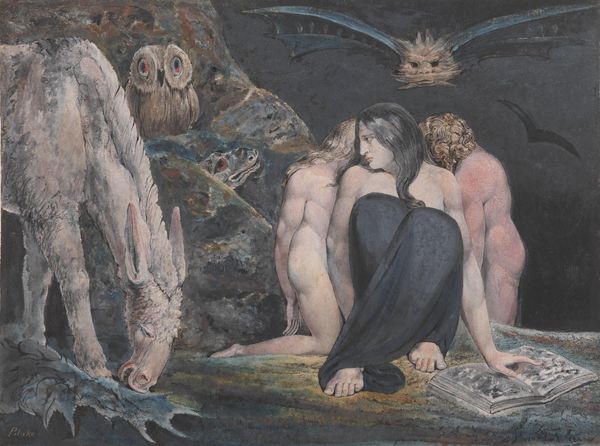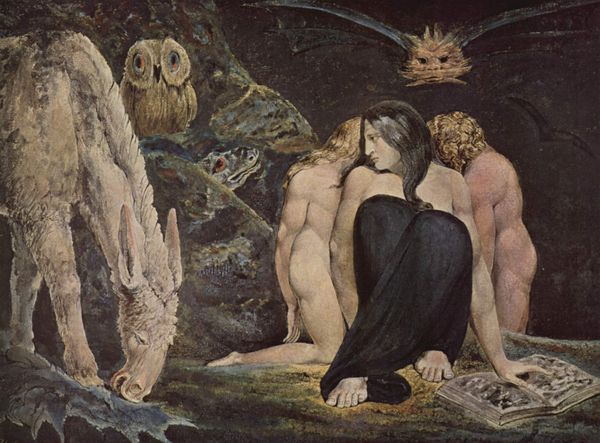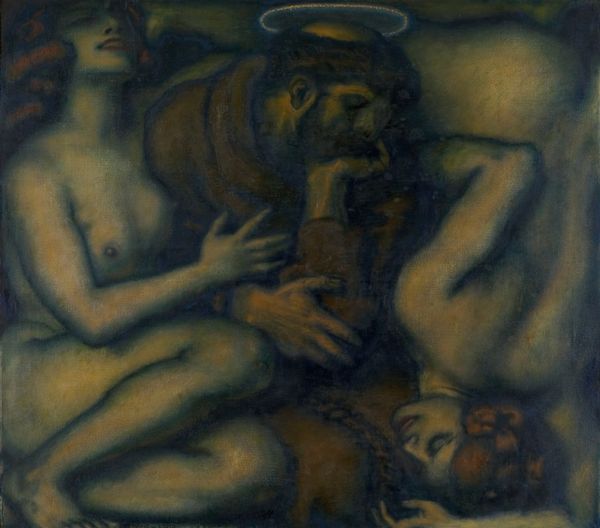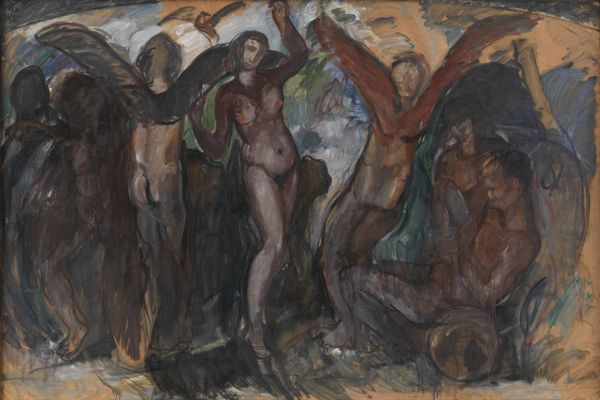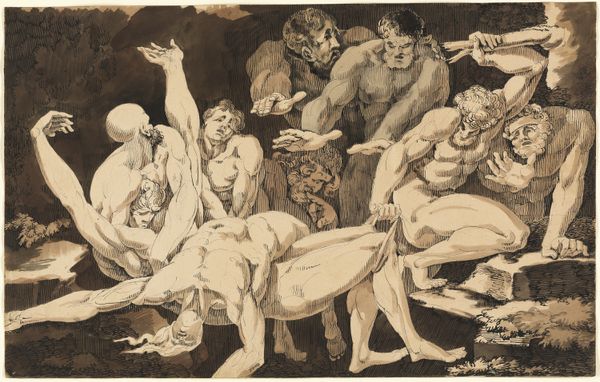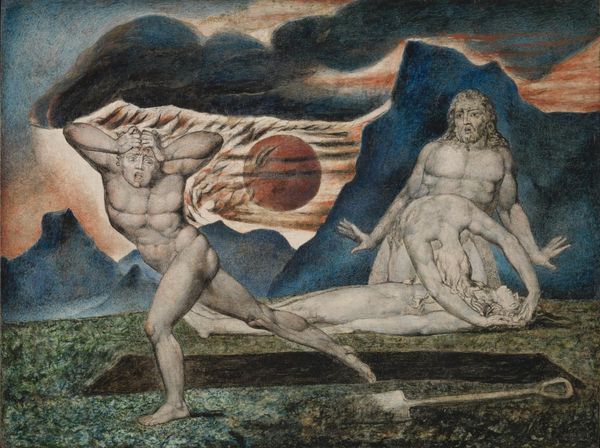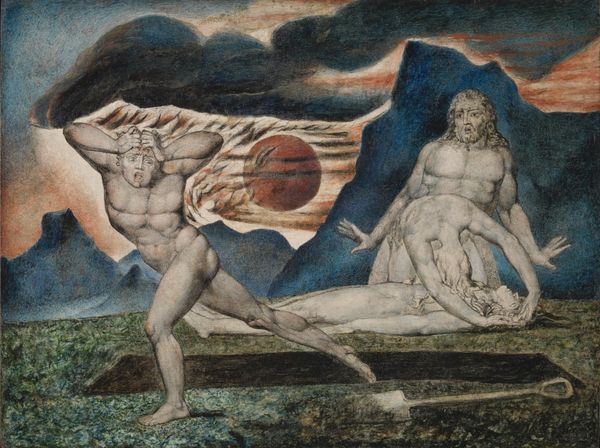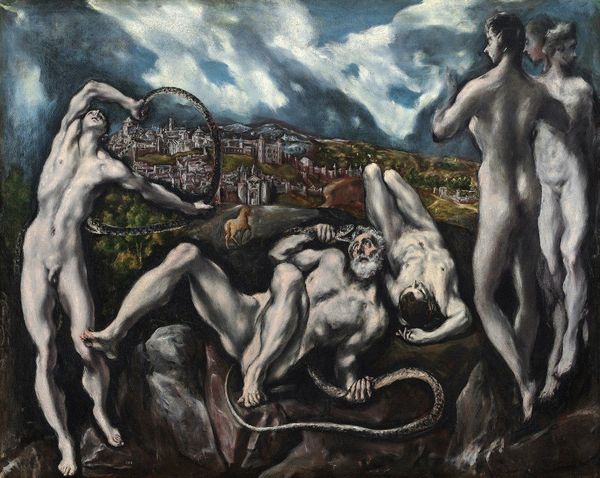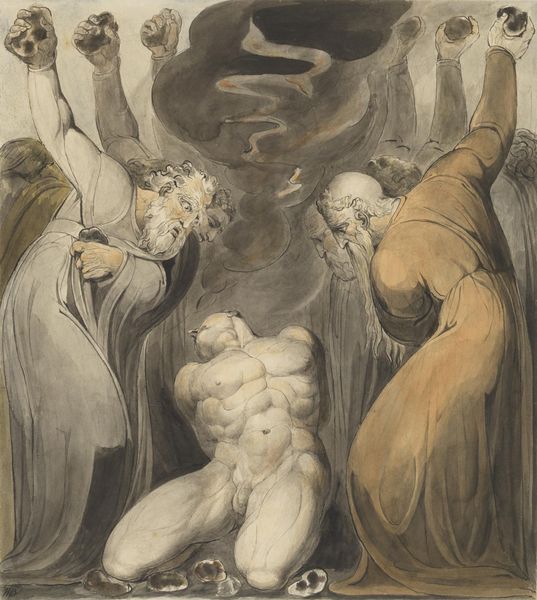
Dimensions: support: 439 x 581 mm
Copyright: CC-BY-NC-ND 4.0 DEED, Photo: Tate
Editor: This is William Blake’s "The Night of Enitharmon’s Joy," also known as ‘Hecate.’ It’s undated, but the watercolor is just captivating. The somber mood and strange menagerie of figures are really striking. What do you make of it? Curator: Blake challenged conventional artistic and societal norms. Consider the role of the Royal Academy in shaping artistic taste at the time. How might a work like this, with its esoteric symbolism and rejection of classical ideals, have been received? Editor: I imagine it wasn’t exactly welcomed with open arms by the establishment? Curator: Precisely. Blake critiqued the rationalism of the Enlightenment, so he built his own visual language. It gives agency to imagination. Editor: That’s so interesting! I see how his unique perspective really comes through. Curator: It really makes you consider the power of art to challenge social structures.
Comments
tate 6 months ago
⋮
http://www.tate.org.uk/art/artworks/blake-the-night-of-enitharmons-joy-formerly-called-hecate-n05056
Join the conversation
Join millions of artists and users on Artera today and experience the ultimate creative platform.
tate 6 months ago
⋮
The dense, dark colour-printing in the sky and the rocks suggests that this was the first of the three known impressions to be printed. Blake has used pen and ink to give strong outlines to the figures, and to draw locks of hair, the bat, and the donkey’s mane and rough coat. The figures have been given form and roundness by washes of intense but transparent colour. The owl’s eyes are highlighted with a bright, opaque red wash. Enitharmon is a character in Blake’s mythology. In her ‘night of joy’ she sets out her false religion. Gallery label, September 2004
